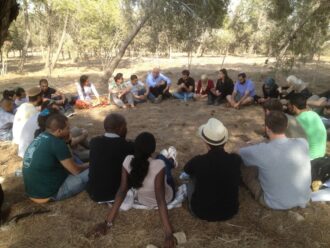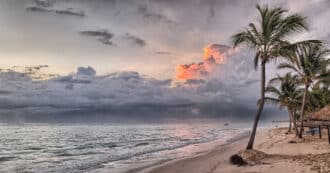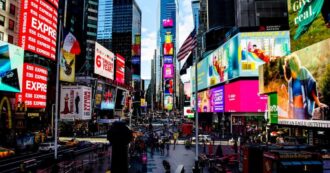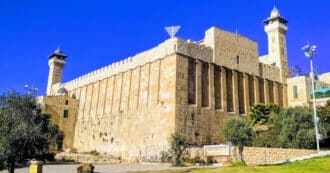By Anthony Bartaway for the Interfaith Center for Sustainable Development (ICSD)
On October 31st, the Interfaith Center for Sustainable Development (ICSD), together with Rabbis for Human Rights, held an interfaith seminar with Jewish, Muslim, and Christian students. The seminar took place in the pine forest and olive groves of the Gilboa mountains, with views of the the lower Galilee, the northern West Bank, the Jordan River valley, and the mountains of Jordan.
At the seminar, participating students from Al-Qasemi College in Baqa al-Gharbiyye and Yeshivat Ma’ale Gilboa in Kibbutz Ma’ale Gilboa, along with others, split into small groups that included a Christian, Muslim, and Jew for a two-hour long nature walk. They were taken along a nature hike with discussion questions posted along the way to encourage the participants to share their own stories and create common ground.
Participants were asked to share who they are, where they come from, and what connection they have with their faith and environment, among other things. For many, it was their first time coming into direct, personal contact with ‘the other,’ be it a Muslim, Jew, or Christian. While members of either groups see each other’s towns and homes, in Israel there is often little intermingling between members of either community. With a few exceptions, neighborhoods or cities tend to be inhabited by only members of one group or the other with little mixing.
Despite these challenges, however, the students were able to quickly break down barriers and engage each other on very friendly terms. Several people commented that they believed that most Jews and Israeli Arabs could engage each other similarly; that while they rarely have much opportunity to speak, it only takes a few minutes of conversion to realize that there are more similarities than differences. All it takes is someone to start the conversation and “ask the right questions.” Nature fosters an openness and level of comfortability that encourages participants to open up to people whom they might have feared.
One of the methods that participants thought of to promote dialogue was cross-cultural education. In particular, the learning of the language of the other group, be it Hebrew or Arabic, can be an important way of building bridges between the two peoples. Interestingly, in my own group, the Arab and Jewish members were able to speak with each other in Arabic, Hebrew, and English.
The environment itself proved to be reminder of the peculiar separation but cohabitation of the land. The hike took place in between two towns, Kibbutz Ma’ale Gilboa on the Israeli side of the ‘green line’ and Faq’ua in the West Bank. The two towns are only a few kilometers from each other and within clear sight, but are divided by religion and ethnicity and their inhabitants ra100rely, if ever, come into contact with each other.
The trail itself followed the path of the Separation Barrier for a stretch. It also proved to give ample opportunity to discuss how each group connects itself to the land. The Arab students remarked that the lines of cacti showed evidence of Arab ownership, as cacti were used to mark the boundaries of land plots. Meanwhile, Jewish participants remarked how an ancient wine press encountered along the way was a sign of Jewish historical presence and that Gilboa was the site of an important battle between the Israelite army under King Saul and the Philistines that ended with Saul’s suicide and the ascension of King David.
Halfway through the hike, in a pine clearing, everyone came together as one large group for a lunch and discussion. Before the meal, the Arab Muslim students witnessed the Jewish seminary students taking part in their pre-meal prayers, which is not something that they were familiar with. They would go on to ask about what kinds of prayers Jews said throughout the day and about why Jewish men wear a kippa (head covering).
Following the prayer, Rabbi Yonatan Neril, Founder and100 Executive Director of ICSD, gave a short talk on how Judaism asks of its adherents to take care of the environment and how even on military campaign soldiers are commanded to bring a shovel to dig latrines and keep the land clean, similar to the “Leave No Trace” concept in modern outdoorsmanship.
After this, the faculty member from Al-Qasemi said a great deal about the Sufi Islamic perspective of environmental stewardship. Muslims are called upon to take care of trees and that a man, even on his deathbed, should plant a tree to provide for future generations. He made the point that almost all the world’s religions include the concept of stewardship; it is their followers who choose to ignore them.
As the walk went on, the participants became more and more comfortable with each other. Conversations began to branch beyond the structure provided by the pre-designed discussion question and became more organic and freeform. After concluding with another group session in the kibbutz itself, the participants said they looked forward to other opportunities to engage with members of ‘the other side.’ With more encounters like these, tensions within their broader societies can be overcome and a more peaceful society can be built.
At the end of the seminar, participants were asked to fill out an evaluation survey. The responses were overwhelmingly positive and nearly every respondent said that they would like to build upon the experience by interacting with the “other” more often. The Interfaith Center for Sustainable Development would like to thank The Julia Burke Foundation, the British Shalom/Salaam Trust (http://www.bsst.org.uk/), and Anne Frank Fonds, whose support made the event possible. If you or your organization would like to take part in something similar, please contact us.











